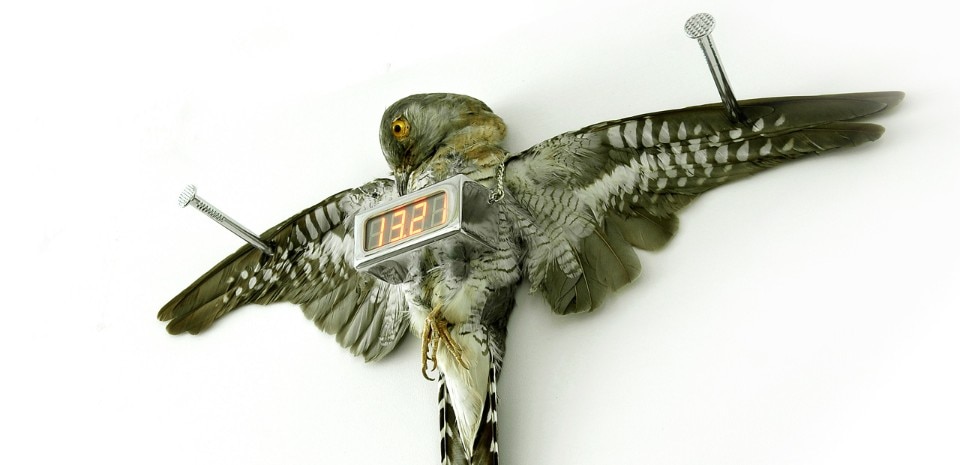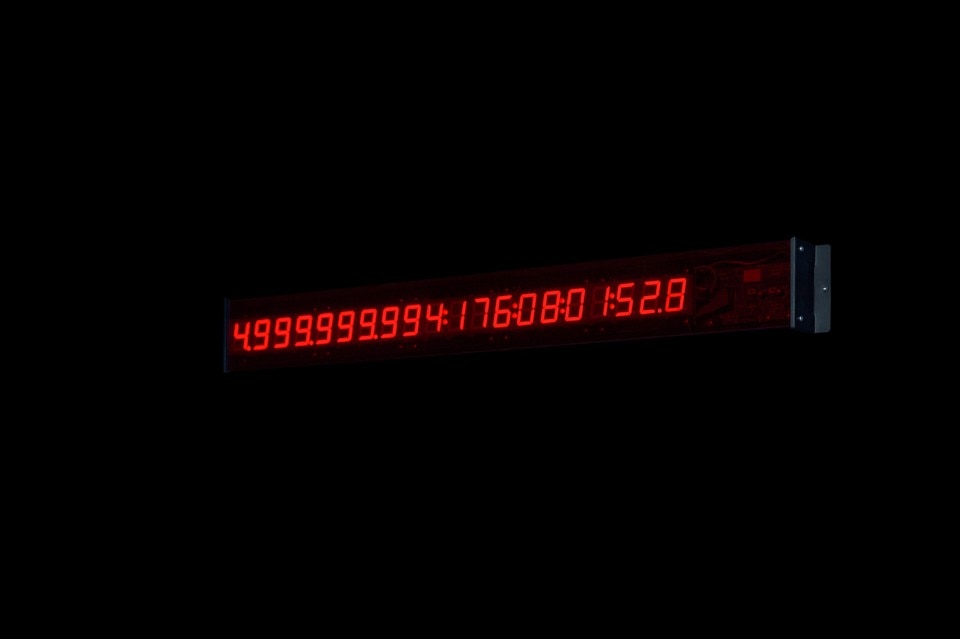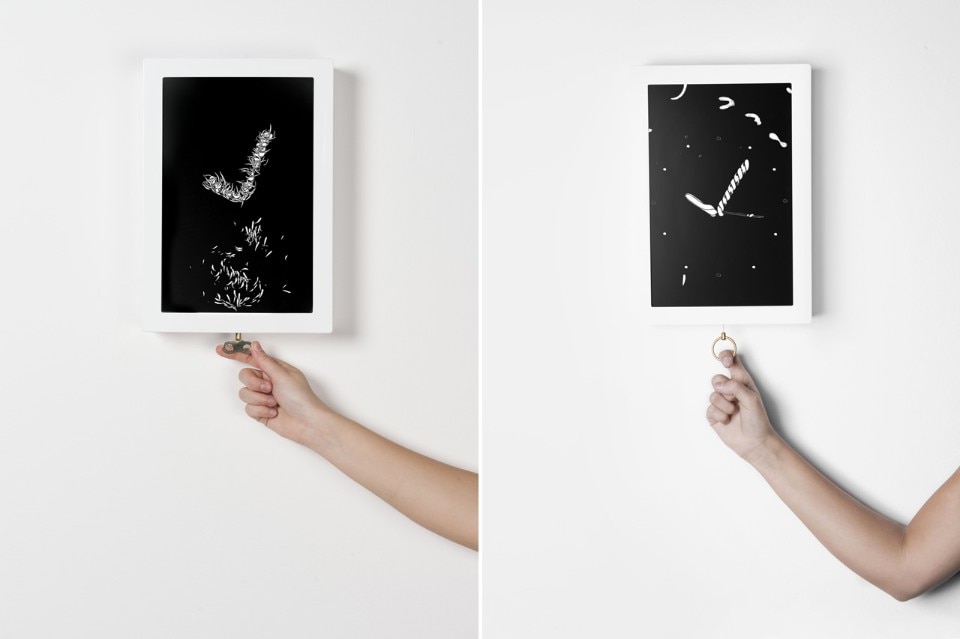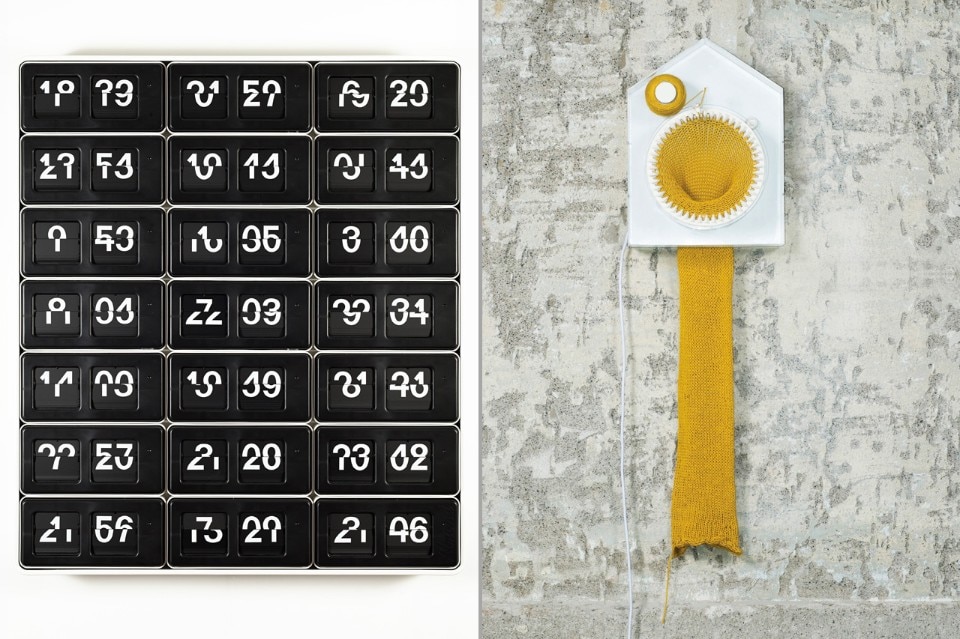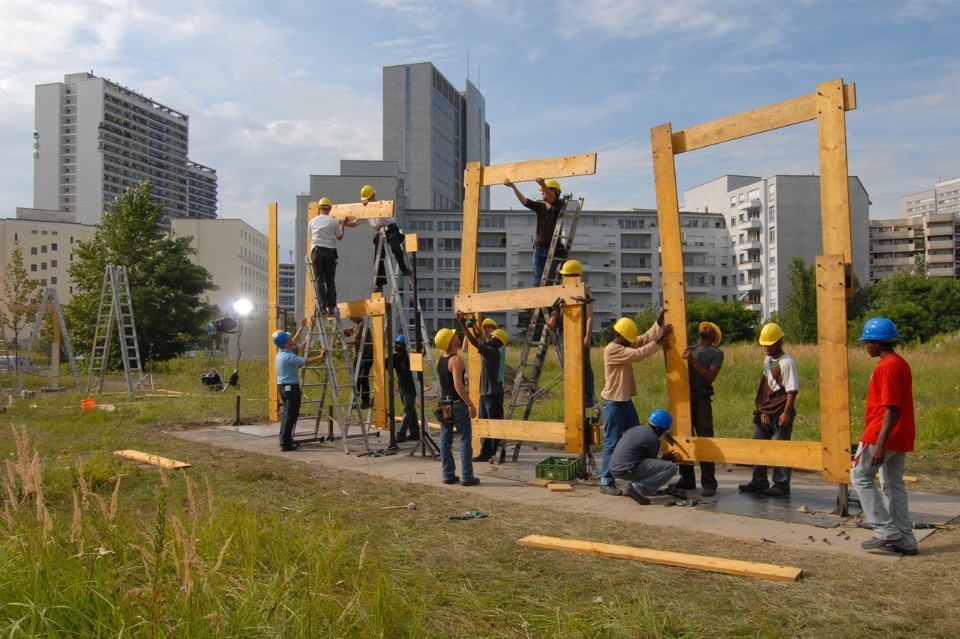
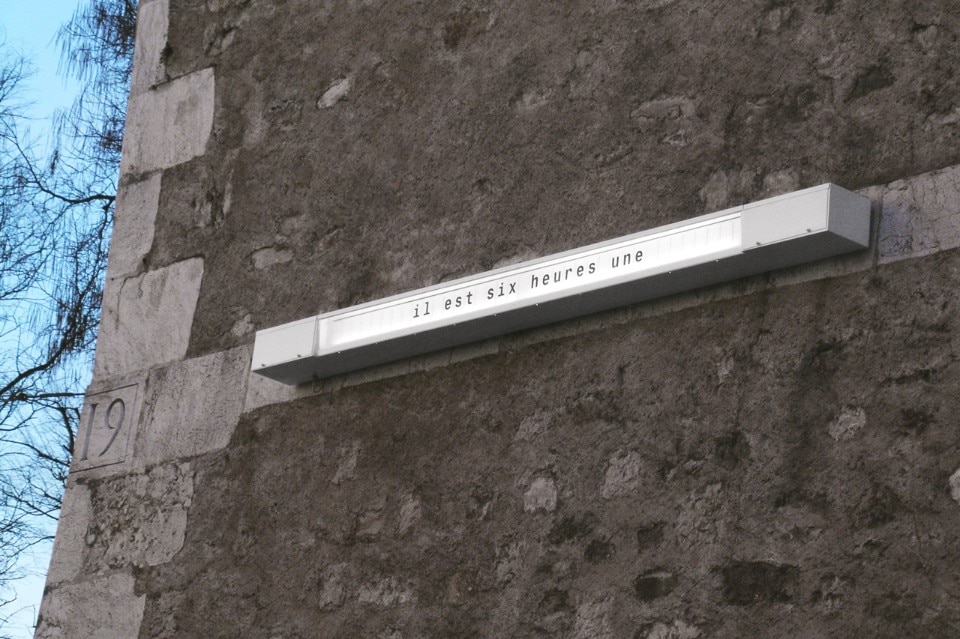
Their features help us to draw parallels with contemporary designers and plastic artists whose works explore ways of prolonging, diverting or testing the display of time and the passage of time. Gianni Motti counts down the seconds to the time when the sun is expected to explode, in 5 billion years (Big Crunch Clock, 1999); Maartens Baas offers a video in which the time is displayed by people sweeping up rubbish, in real time (Sweepers Clock, 2009); John M Armleder reinterprets the idea of a memento mori in a contemporary watch (ART-DNA, Romain Jérôme, 2012); Ivan Argote counts off the hours and minutes in dollars or euros (Time is Money, 2007); Siren Elise Wilhelmsen measures the passage of time by the progress on the scarf knitted by her wall clock (365 Knitting Clock, 2010); Marti Guixé’s timepiece reminds us when it is time to eat by emitting food smells at the appropriate moment (Time to eat, 2011). Time is brought bang up to date, exploring the opportunities offered by ingenuity, wit, intelligent imitation and poetry. Canvases, one-of-a-kind or mass-produced items, projections and installations punctuate the itinerary through the exhibition, building up an unexpected and revealing panorama of our relationship with time and the way we tell it.
Each of these domains – watchmaking, art and design – brings its own particular resonance, its own poetry and aesthetic language. The exhibition builds bridges from one time to another, one subject to another, sometimes playfully, while highlighting the harmony and continuity between the past and the present. It is unexpected, curious and funny.
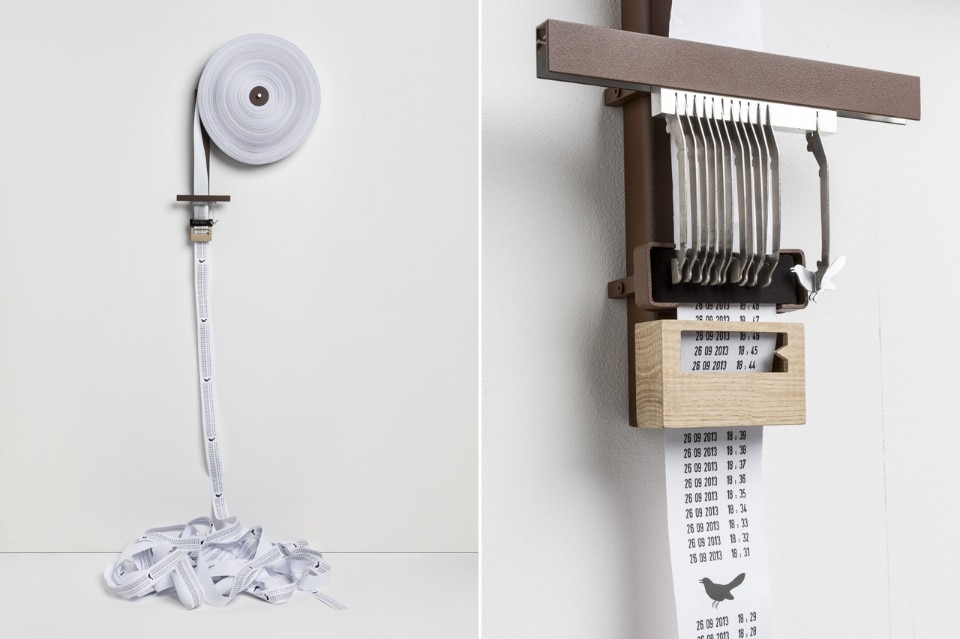
“Telling Time” brings together a considerable corpus of more than 150 objects from all over Europe. The historical pieces are from both private collections and major public repositories, as well as heritage collections from manufactures.
The scenography is a result of a partnership with the ECAL/Ecole cantonale d’art de Lausanne, and is the work of Iris Andreadis, Anna Heck, Pauline Lemberger and Jérôme Rütsche, all students on the Exhibition Design course led by industrial designer Adrien Rovero.
A book to accompany the exhibition has been produced jointly by the mudac and 5 Continents Editions (Milan). It includes all the works in the exhibition along with essays by the exhibition curators and experts in a variety of disciplines.
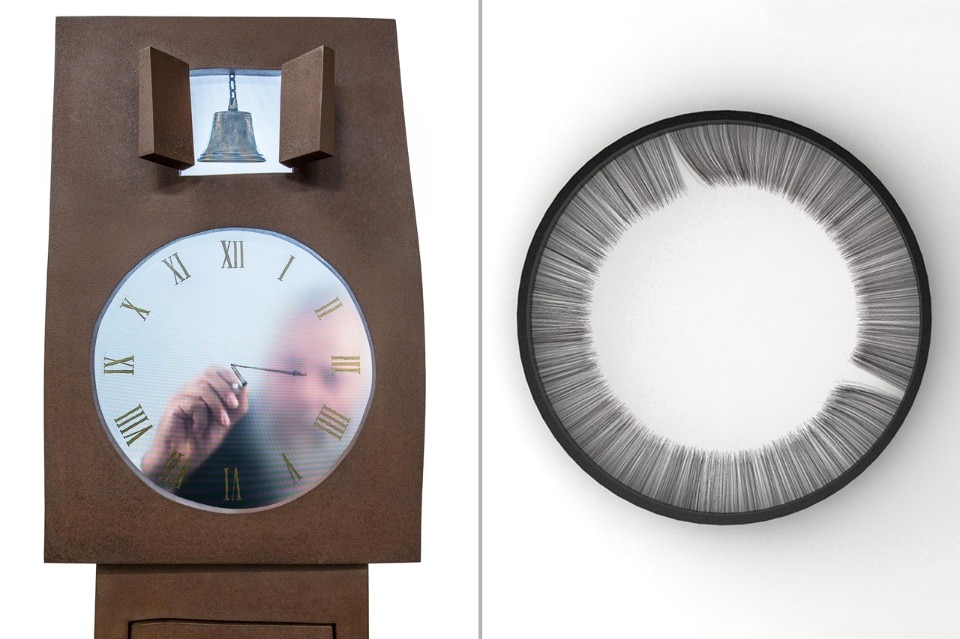
27 May – 27 September 2015
Telling Time
Curators: Chantal Prod’Hom and Fabienne Xavière Sturm
Scientific advisers: Karine Tissot and Arnaud Tellier
mudac – musée de design et d’arts appliqués contemporains
place de la Cathédrale 6, Lausanne


